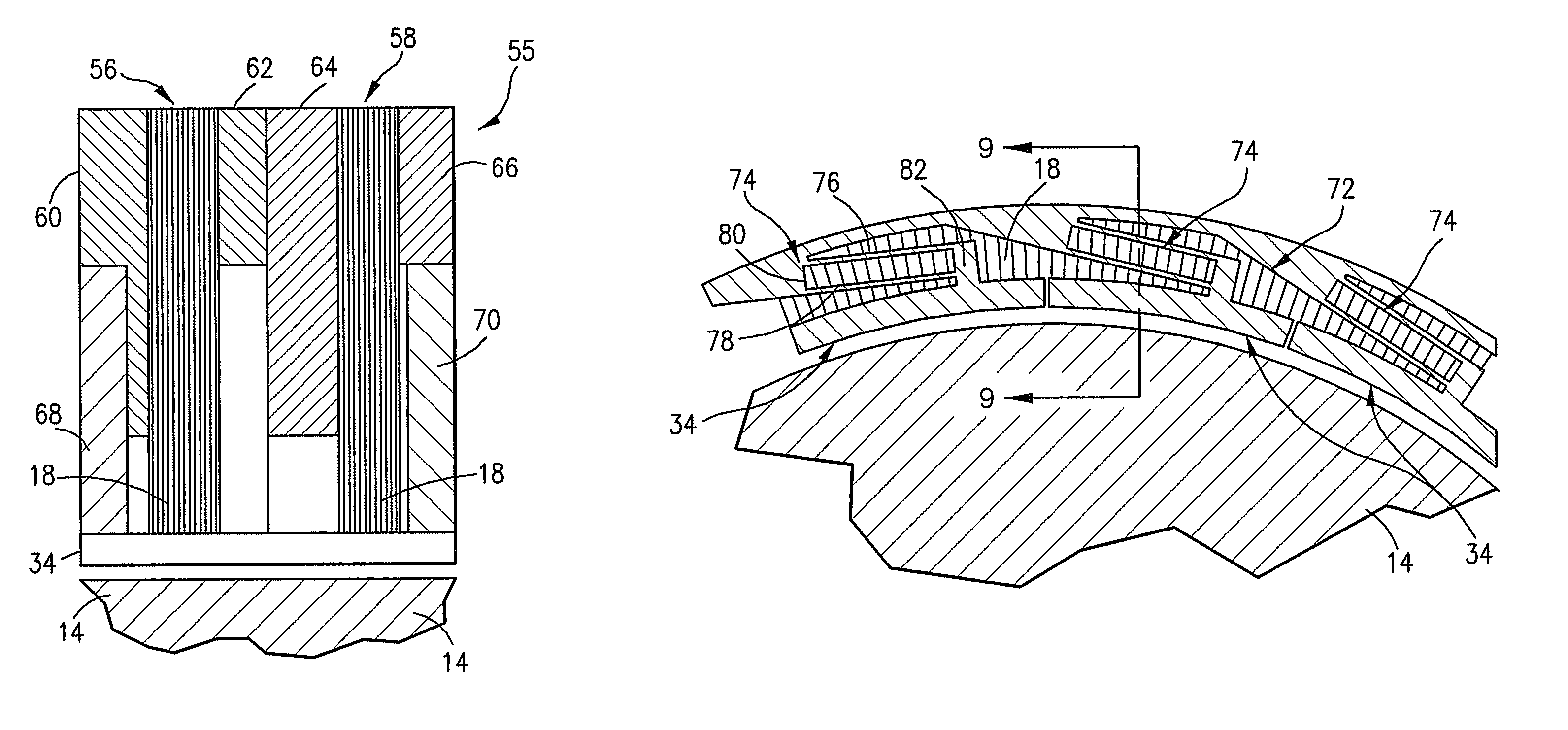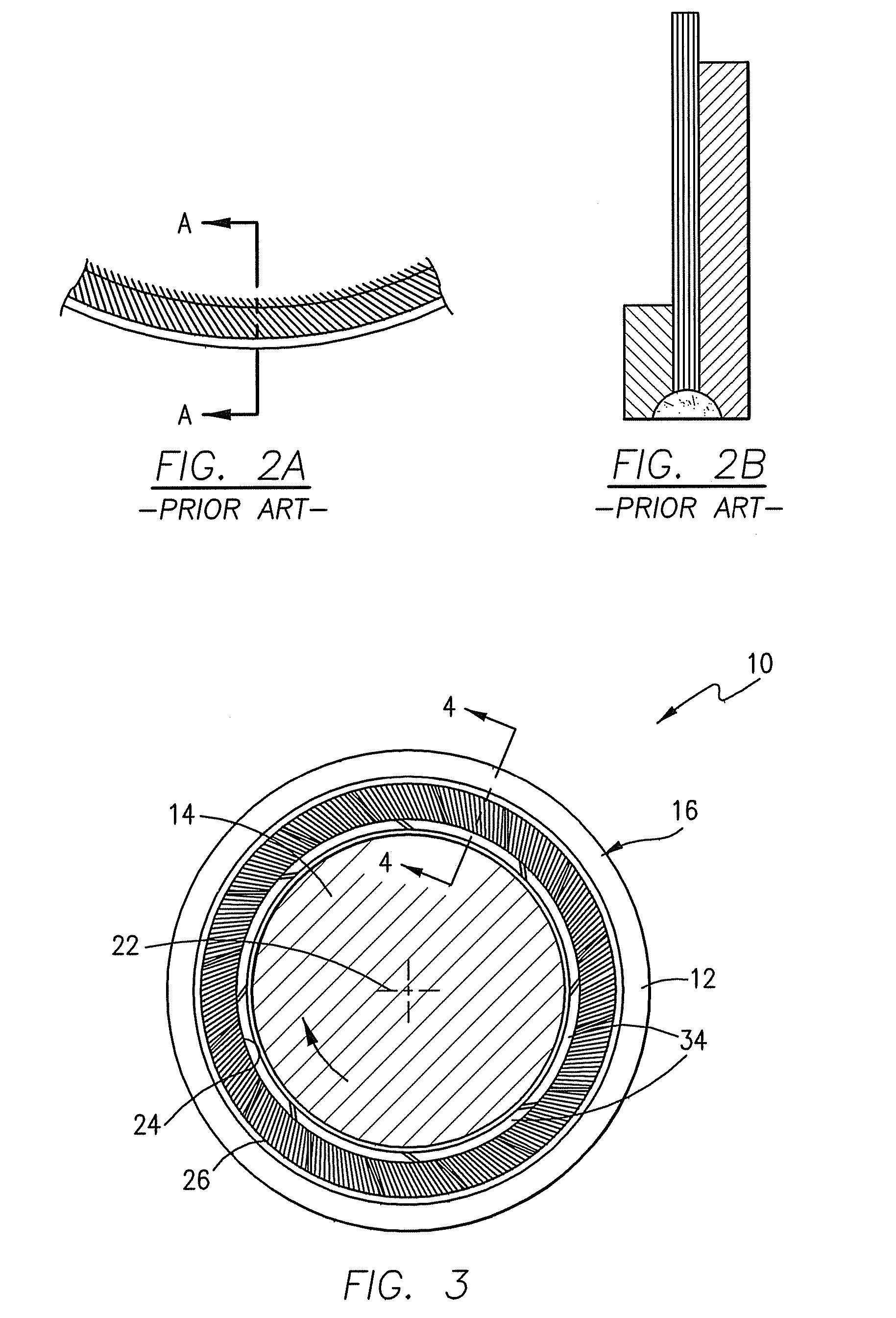Hydrodynamic brush seal
a brush seal and hydrodynamic technology, applied in the field of brushes, can solve the problems of excessive engine vibration, carryover effect, and potential increase of engine vibration
- Summary
- Abstract
- Description
- Claims
- Application Information
AI Technical Summary
Benefits of technology
Problems solved by technology
Method used
Image
Examples
Embodiment Construction
[0032]Referring initially to FIGS. 3-5, the hybrid bush seal 10 of this invention is intended to create a seal between two relatively rotating components, namely, a fixed stator 12 and a rotating rotor 14. In this embodiment, the seal 10 comprises a first group or bundle 16 of seal bristles 18 and a second bundle 20 of seal bristles 18 which are axially spaced from the first bundle 16. As used herein, the term “axial” or “axially spaced” refers to a direction along the longitudinal axis of the stator 12 and rotor 14, e.g. axis 22 in FIG. 3, whereas “radial” refers to a direction perpendicular to the longitudinal axis 22.
[0033]The seal bristles 18 in each bundle 16 and 20 have an inner end 24 and an outer end 26. In the embodiment illustrated in FIGS. 3 and 4, the outer end 26 of the seal bristles 18 in each bundle 16, 20 is affixed to the stator 12. For purposes of the present discussion, the construction and operation of the seal 10 herein is described with the seal bristles 18 in ...
PUM
 Login to View More
Login to View More Abstract
Description
Claims
Application Information
 Login to View More
Login to View More - R&D
- Intellectual Property
- Life Sciences
- Materials
- Tech Scout
- Unparalleled Data Quality
- Higher Quality Content
- 60% Fewer Hallucinations
Browse by: Latest US Patents, China's latest patents, Technical Efficacy Thesaurus, Application Domain, Technology Topic, Popular Technical Reports.
© 2025 PatSnap. All rights reserved.Legal|Privacy policy|Modern Slavery Act Transparency Statement|Sitemap|About US| Contact US: help@patsnap.com



